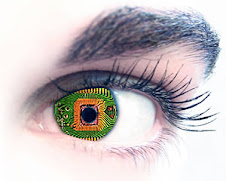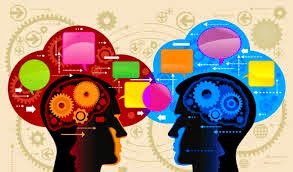Hope you can catch our farewell production for year 2008 ( resting for the Christmas season ) ...

The Manila Futurists Society, in cooperation with the Webmasters Guild of Mapua Institute of Technology (MIT) , is holding the fifteenth and last leg of the MFS campus tour seminar-series for year 2008 , entitled "Cyberculture Future: The Next One Hundred Years" ---- set on Wednesday November 19 2008 330 PM at the AVR1 Audiltorium of Mapua Makati City .
See you there!
World's Fastest Computer
( dubbed as one of 2008's 50 best inventions , as per Time Magazine )

IBM's Roadrunner , dubbed as “the world's first hybrid supercomputer" is breaking global records through the "petaflop barrier" and swaggering with its 1,000 trillion operations -- per second.
That’s one quadrillion calculations per second.
www.futureculture.tk

Imagine a hard drive linked directly to your mind enabling you to “download” memory implants for skill enhancements.
Actions will be performed though these have not been learned directly.
You could master any subject, or learn a foreign language – without studying.
www.positivefuturist.com

Cognitive Computing In Year 2020
This will enable efficient brain-machine connections,which in the next decade, will be used mostly for research and neuroprosthetics.
But the immense prospect for enhancing human minds will drive this technology forward and by mid-2020s, human-machine interface will become routine.
Cybernetics Expert Christof Koch

Will tomorrow’s computers develop human-like intelligence and become
smarter than us?
Most scientists say yes; it’s only a matter of time.
IBM’s ASCI Purple processes 100 trillion operations per second – or 100 teraflops.
Scientists believe our brains process 10,000 teraflops, 100 times faster than ASCI Purple.
Futurist Dick Pelletier

Year 2020
By Futurist Ray Kurzweil
So when can we expect a computer with human-like processing speed?
In “The Age of Spiritual Machines, When Computers Exceed Human Intelligence” Kurzweil predicts this will happen by 2020.
At that time computers will equal the human brain in calculation speed, but they will still lack self-awareness and a sense of being conscious.

Year 2025 to Year 2030
If technology takes its course, possibly between years 2025 and 2030, our computer/robot of tomorrow will achieve human-like intelligence and look amazingly like us.
Imagine the benefits : It could serve as personal assistant, generate income, become an artificial companion, or even replace soldiers in battle.
www.positivefuturist.com

Hologram Technology
On CNN’s election night episode, CNN News Correspondent Jessica Yellin from Chicago appeared right on the set of CNN’s New York studios , doing a “Star Wars” feat ala Princess Leia.
Hologram Technology will reign in cyberculture future for the next one hundred years.
www.cnn.com

The Future of E-Learning
E-learning is beset with a host of challenges and issues that continue to make it controversial , yet it is already widely recognized as an invaluable resource for students, educators, and parents.
www.techlearning.com

As we progress deeper into the 21st century, the primary challenge may lie more in moving beyond the traditional ways of teaching and learning that still cling to both in-person and virtual learning environments, and into the broadening realm of possibility that the newest technologies have opened to us.
www.techlearning.com

By year 2025:
Futurists predict, nano-replicators will appear on kitchen counters to fill all our material needs.
We could eat a nutritionally-perfect meals created automatically with information downloaded from the Internet, using only dirt, air, or water as raw materials.
www.positivefuturist.com

"We're about moving the state-of-the-art forward."
"Ultimately, we're about making sure Microsoft and its products are around in 10 years."
“In the past , we have produced technology that has gone into Xbox graphics, the company's videoconferencing device RoundTable, speech-recognition tools and cryptography libraries.”
Microsoft Research
Senior Vice President Rick Rashid

Cyber Schools
Cyber schools, where students receive instruction via internet connected computers—is one restructured model of schooling.
They interact with teachers via e-mail , meet in groups where they ask questions with a microphone, indicate they don't understand with the click of the mouse and receive live instruction through Web-based chats.
www.techlearning.com

But there are ethical questions and risks. Are these Computers of tomorrow
a form of life or just a machine? How about legal rights?
And what safeguards might be necessary to prevent these powerful machines from harming us?
This overwhelming technology will surely mark the beginning of a “brave new world” for humankind.
Futurist Dick Pelletier

Future Directions In Computing are now exploring other techniques to deliver powerful computers.
A quantum computer is a theoretical device that would make use of the properties of quantum mechanics, the realm of physics that deals with energy and matter at atomic scales.
It is a new paradigm for computation.
University of Oxford’s Professor Arthur Ekert

The Future of Computing
In the future, the number of tiny but powerful computers you encounter every day will number in the thousands, perhaps millions.
You won't see them, but they will be all around you.
Your personal interface to this powerful network of computers could come from a single computing device that is worn on or in the body.
www.futureforall.org

IT will also encourage breakthroughs in genetics, nanotech, and materials industries.
Forward-thinkers dream of a future time when human aging and death will become just bad memories of our ancient past.
www.positivefuturist.com

BrainGate of the Future:
BrainGate is a device that enables paralyzed people to control computers directly with their brains – and eventually could help them regain complete mobility.
“The goal of BrainGate is to develop a fast, reliable, and unobtrusive connection between the brain of a severely disabled person and a personal computer .”
www.positivefuturist.com

Year 2015:
Inexpensive chips and advance networking will eliminate cable, satellite, VCR, and DVR boxes, and merge all our communication needs – TV, phones, radio, and the Internet – into a single invisible device that responds to our voice and understands our thoughts.
We will view images from this system on wall-size screens in our homes, or directly on our retina with active contact lenses.
Futurist Dick Pelletier

Intel Research: “Technology That Works”
While the capabilities and versatility of computing devices continue to grow, so does their complexity at both the hardware and software level.
As more devices become essential to our daily lives, it will become increasingly important to conceal their complexity by reducing what people need to learn to operate them.

Intel’s “Intelligent Assistance“
and “Universal Mediator”
This involves using high-level understanding and modeling of complex digital environments and configurations to develop simple diagnosis, presentation and repair.
We are also working on a "universal mediator" that uses intelligent broad spectrum analysis and mediation to handle a wide array of coding, protocol, application and security layers.

The development of the personal computer and the Internet has "enabled man to transcend the barriers of physical distance" .
The future of technology will enable people to be life-long learners . Learning will continue into the work place where there is a "need to keep up with current information“.
www.helium.com

IT is the driving force for change as we progress into our “magical” 21st century future.
Today, we are just beginning to exploit this knowledge, but there is much more to learn.
In this century, science and technology advancements will rush by us at breathtaking speeds – fueled by information technologies.
Futurist Dick Pelletier

Essential Computing:
“Simplifying and enriching all aspects of work and daily life through applications and systems technologies that collectively empower individuals, connect them to each other and into the fabric of networked society.”"
Andrew Chien ,
Intel Director

The Orbital Internet
( dubbed as one of 2008's 50 best inventions , as per Time Magazine )
Orbital Internet is here, a new internet protocol based on the idea of providing Internet to remote locations by satellite, and the ambitious communications technology is including inter-planetary internet-surfing in its agenda.
So don't be surprised if you receive an email from somebody from outer space.
Coming soon.
www.futureculture.tk

Schools Of The Future
Classrooms will be outfitted with the latest in interactive technology.
Out are chalkboards.
Instead, rooms will have smartboards, which combine the functions of a computer, projector and whiteboard.
And no more lugging around a dozen textbooks.
http://abcnews. go.com

By Year 2020, Or even before:
Experts believe, tiny microchips placed under our skin will enable us to control electronic devices and browse the Internet with just our thoughts.
We could place these chips into the upper layers of the skin and arrange them into useful circuits to power and control our electronic world.
Futurologist Ian Pearson

Quantum Computers
Scientists have "entangled" two sub-atomic particles separated by about a millimetre, a feat that might pave the way for powerful quantum computers in the future.
Entangled particles may be useful to make logic circuits for computers that have a far greater capacity and speed than today's machines.
http://news. bbc.co.uk

The world's fastest silicon-based microchip has been demonstrated by scientists in the US.
The prototype operates at speeds up to 500 gigahertz (GHz), more than 100 times faster than desktop PC chips.
IBM’s Professor David Ahlgren

Computers, cell phones, music players, and other devices could be implanted on our wrists and hands, with full keyboards.
These would remain invisible until our touch made them light up.
This is the future of IT.
Futurist Dick Pelletier

By 2015, household robots will satisfy our every whim.
By 2020, accident-free driverless cars will keep us safe.
And by 2030, scramjets will whisk us to anywhere on Earth in an hour or less.
Will this "magical future" happen?
Absolutely, say experts: because it’s all driven by information technologies.
Futurist Dick Pelletier

Computers Will Be “Oxygen Of The Future”
By the year 2010, scientists predict we will be immersed in a sea of
miniature computers.
Many of us carry three or four digital devices with us, but soon that figure will be in the hundreds.
http://news. bbc.co.uk

The next milestone in the relentless pursuit of smaller, higher performance microchips has been unveiled.
Chip-maker Intel has announced that it will start producing processors using transistors with features just 45 nanometres (billionth of a metre) wide.
Shrinking the technology that underpins the basic building blocks of chips will make them faster and more efficient.
http://news. bbc.co.uk

The Quantum Computing World
Fortune Magazine describes a “quantum computing” world that includes microscopic sensors embedded in our homes, vehicles, and workplace that monitor our well-being 24/7; and a thin headband of ultrasonic transducers that wirelessly transmits information both ways between the Internet and our brain, and to other headbands.
Quantum computation is still in its infancy. Teleportation so far is only restricted to the teleportation of information.”
Dr Ping Koy Lam, Australia National University

By Year 2010 or sooner:
IT’s amazing digital wizardry:
Personal lifelike avatars with compelling characters will be available for home TV displays.
You will interact with a sharp 3-D life-size image of a character you created. Its design, temperament, and voice style will all be of your making.
www.positivefuturis t.com

From cell phones and PDAs to personal music players, digital devices are becoming increasingly personal and important for social use, personal enjoyment, and awareness of what's going on in people's immediate world.
In the future we may have a "wardrobe" of personal devices to help us pursue short- and long-term goals and personal enhancement. .
www.techresearch. intel.com

Moore’s Law So True For The Next 100 Years
Moore's Law is a prediction made by Intel's co-founder Gordon Moore in 1965.
Moore predicted that computing technology would increase in value at the same time it would decrease in cost.
Thanks to the innovation and drive of Moore and others like him, computers will continue to get smaller, faster and more affordable.
www.futureforall. org

"The Moore's Law for computer technology states that in every 18 months, there will be a doubling of computer memory, speed and other performances, "
"In a few years' time, this law will have to confront quantum theory when transistors are shrunk to the size of a few atoms."
Chinese-Australian Physicist Dr. Ping Lam

Andrew Chien, Intel Research Director
“One of the things that we're very focused on is this idea of inference and understanding the world.
The big idea is all about whether inference and sensors are really the missing piece to make ubiquitous computing come to fruition.
We can build small devices that fit into our pocket, but the things we're falling short on are inference, making the devices work together well, and making them interact with us in natural ways.

A good percentage of Microsoft research focuses on improving current products or creating brand new ones for the company .
The company's research projects include work on quantum computing, spam-fighting technology and a new user interface.
Microsoft Research Senior Vice President Rick Rashid

Singularity, a prototype operating tem for the computer science research environment, will be available in the USA at no charge for academic and noncommercial use.
The goal of Singularity is to help improve software dependability and foster inventive research in systems, programming languages and tools.
Microsoft’s Research Department

New Super Computer For Medical Science Progress
This new computer will be the one of the world’s fastest, with a sustained capacity of 50 trillion calculations, or teraflops, per second and a peak capacity of 250 teraflops per second, enable breakthrough discoveries that will change medical science and its impact across society.
Futurist Dick Pelletier

Computers With The Speed of Light
Light travels at 186,000 miles per second.
That's 982,080,000 feet per second – or 11,784,960,000 inches.
In a billionth of a second, one nanosecond, photons of light travel just a bit less than a foot, not considering resistance in air or of an optical fiber strand or thin film.
Just right for doing things very quickly in microminiaturized computer chips.
www.futureforall. org











































